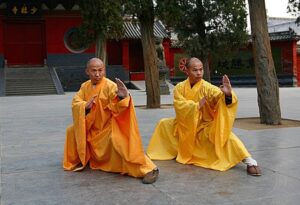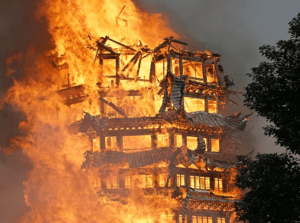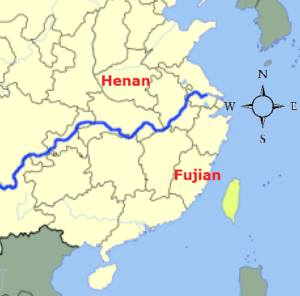
The Shaolin Temple, located in Henan Province, China, is famous for its deep-rooted history in martial arts. It served as a sanctuary for Buddhist monks who sought refuge and engaged in spiritual practice. The Temple is widely recognized as the birthplace of many martial arts styles and has been a hub for martial arts training for centuries. It has played a significant role in preserving and disseminating Chinese martial arts and Buddhist culture.
The name “Incense Shop Boxing” is associated with a legend and historical events involving the Shaolin Temple.

During the Qing Dynasty, the relationship between the Shaolin Temple and the ruling Qing government was complex and varied. There were instances of both support and hostility directed towards the temple and its monks. Around 1644 or 1732, forces from the Qing government attacked the Shaolin Temple in Henan Province. This attack resulted in the temple being set ablaze, leading to its destruction and the dispersal of the resident monks. The fire also caused the loss of valuable historical records and artifacts housed within the temple.
It is said that a group of Shaolin monks sought refuge in various locations, including local villages and incense shops. The incense shops were considered relatively safe havens, and the monks disguised themselves as incense sellers or workers to avoid capture. These monks continued their martial arts training and passed on their knowledge to subsequent generations. Over time, this clandestine practice in incense shops led to the development of a distinctive subset or variation of the Shaolin martial arts (Monk Fist Boxing/Southern Monk Fist), colloquially known as “Incense Shop Boxing” (Xiang Dian Quan, 香店拳).

Now, let’s address the historical accounts regarding the origin of Shaolin Kung Fu in different provinces. According to certain historical accounts and legends, it is believed that it was a Southern Shaolin Temple in Fujian Province that was destroyed by the Qing armies, rather than a Northern Shaolin Temple in Henan Province. The surviving Shaolin monks, who were originally from the Henan Province, sought refuge in incense shops in Fujian Province.
However, it is important to note that the Shaolin Temple in Henan Province is widely recognized as the birthplace of Shaolin Kung Fu, which encompasses both northern and southern influences. The Shaolin Temple in Henan Province has played a crucial role in the development and preservation of this famous martial arts style. On the other hand, Fujian Province, particularly in the southern region of China, is associated with other martial arts styles such as Southern Shaolin Kung Fu, White Crane, and Five Ancestors, which have their origins in that region.
Therefore, while “Incense Shop Boxing” is generally associated with the southern region of China, the Shaolin Temple in Henan Province remains the renowned birthplace of Shaolin Kung Fu, one of the most famous and influential styles of Chinese martial arts. The intertwined history and cultural exchange between different provinces have contributed to the diverse martial arts landscape in China.
Overall, the Shaolin Temple and its martial arts legacy continue to inspire and captivate people worldwide, showcasing the rich cultural heritage and the profound impact of Chinese martial arts.
It is important to note that legends and historical accounts regarding the origins and evolution of martial arts styles can vary, and separating fact from fiction can be challenging. Nonetheless, the tale of “Incense Shop Boxing” is part of the rich mythology and folklore associated with the Shaolin Temple and its martial arts legacy.
Thanks for reading.
Gert
